- Administrator
- Albums and Singles
 For their second collaborative release (following Untitled 1-3), these two composers who work in very different, but musically complementary realms have created a single, 45 minute work that makes for the perfect blend of light and shadow, clear and haze, with the album artwork making for a perfect metaphor for the sound within.
For their second collaborative release (following Untitled 1-3), these two composers who work in very different, but musically complementary realms have created a single, 45 minute work that makes for the perfect blend of light and shadow, clear and haze, with the album artwork making for a perfect metaphor for the sound within.
The first collaboration between these two involved them reworking each other's archival materials and unfinished works at various stages of completion, but Aurora Liminalis is a completely fresh work made up of new materials.The two may work together brilliantly, but their backgrounds are diametrically opposite:Chartier is a self-taught artist who draws heavily from synthetic sources and DSP processing, while Basinski has a classically trained background and prefers to work with magnetic tape and other less than perfect analog equipment.However, the differences complement each other perfectly, pairing organic warmth and digital precision throughout.
At times a warm, rich analog tone is stretched out to infinity, with all the imperfections of the dated technology, only to then be paired with carefully modulated digital interference and squeaky static fragments.During other moments, clinically precise buzzing square waves are mixed with fuzzy, inconsistent bits of tape hiss.
One thing Basinski and Chartier do share is an ear for the subtle and an avoidance of overbearing sonic bombast, and that is clearly reflected here.From the waves of tone to delicate crystalline fragments of static, everything remains hushed and distant, but never so much that it becomes the aural equivalent of wallpaper.Instead it demands attention and focus.The changes are subtle, but extremely effective:a mystical drone off in the distance is too dramatic to ignore, and the occasionally percussive pop or click makes for a forceful change, without being intrusive or overly disruptive.
The constant flow and shift is like the passage of light, at times bringing in a glorious, glowing warmth,while other times casting shadows and creating ghostly apparitions that may or may not be present.The result is a brilliant collaboration that comes across as unique entries in both artists' discographies, not sounding completely like either but bearing both of their marks perfectly.
samples:
 
Read More
- Administrator
- Albums and Singles
Find Yourself. Impatience. Death Blues. Acceptance. Impermanence. Iron String. The six songs that comprise Jon Mueller's Death Blues are each their own doorway to both a bold new musical statement from the renowned drummer/percussionist and an unprecedented journey into a conscious contemplation of death -- and the life that surrounds it. Released in tandem with a multi-part manifesto, Death Blues transcends its own existence as 34-minute, earth-cracking rock album. Much like Mueller, whose landmark solo work stands alongside his role in notable bands Volcano Choir (and previously, Collections of Colonies of Bees), Death Blues embodies the acknowledgement that there's more to experiencing music than simply just listening.
Conceived and largely executed in its recorded form by Mueller himself -- adding hammered acoustic guitar and bold vocal patterning to his ever-evolving mastery of percussion -- Death Blues is audibly (and intensely) personal. However, the very act of recording was the first step in a discourse that Mueller began over a year ago, forming a band of brilliant performers from his Milwaukee, WI hometown that would go on to perform Death Blues at Hopscotch Music Festival in Raleigh, NC and at two sold-out Death Blues events in Milwaukee, where a labyrinth led the audience into a multi-sensory and participatory experience culminating in a climactic performance of the album. It was as close as one could get to being next to Mueller at that moment of discovery: of the inevitability of death as the impetus to become more present in each moment and of the necessity of building his own path to sharing that idea.
Death Blues is being collaboratively released by Taiga (vinyl) and Hometapes (digital).

Read More
- Administrator
- Albums and Singles
This is the final album. The End, delivered in three parts, is achingly beautiful, and solidifies the territory explored in the band's previous efforts, including the stunning collaboration with Nadja, entitled Christ Send Light (20 Buck Spin), to convey an emotional journey through complex chord structures that render equal parts dissonance and melody. Born from the mind of Campbell Kneale (Birchville Cat Motel, Our Love Will Destroy The World) and partner James Kirk, The End is a stunning juxtaposition of darkness and radiance that triggers a visceral reaction in the listener. Those familiar with previous works from this outfit, such as The Witch Must Be Killed (Conspiracy Records), Verdun (Riot Season), and the multiple releases on 20 Buck Spin, will be elated by this eloquent yet blistering final chapter in one of the best bands to grace the genre. This hand numbered edition of 500 is housed in a custom, oversized, 7" square envelope.
EDITION: 500, hand-numbered, eight pieces to assemble, archived in custom oversized 7" square envelope
RELEASE DATE: FEBRUARY 19, 2013
More information here.

Read More
- Administrator
- Albums and Singles
4 Black Suns & a Sinister Rainbow is the all new double album from legend Matthew Bower (Skullflower/Pure/Total) and his Voltigeurs cohort Samantha Davies. Wrenching the swirl of extreme drone alongside buried melodic texture and harsh blackened noise comes a gnarled, cohesive work which serves as evidence that even the most prolific artists can find boundaries to break, and envelopes to push. The nuance in this double album is infinite, with each listen rendering a new discovery. For those with the deep-seeded desire to challenge the listening impulse, and continue what is nearly the fourth decade of the musical progression of a master, you will undoubtedly be entranced by this lush mosaic of sonic density.
EDITION: 500, 2XCD, hand-numbered
RELEASE DATE: FEBRUARY 19, 2013
More information here.

Read More
- Administrator
- Albums and Singles
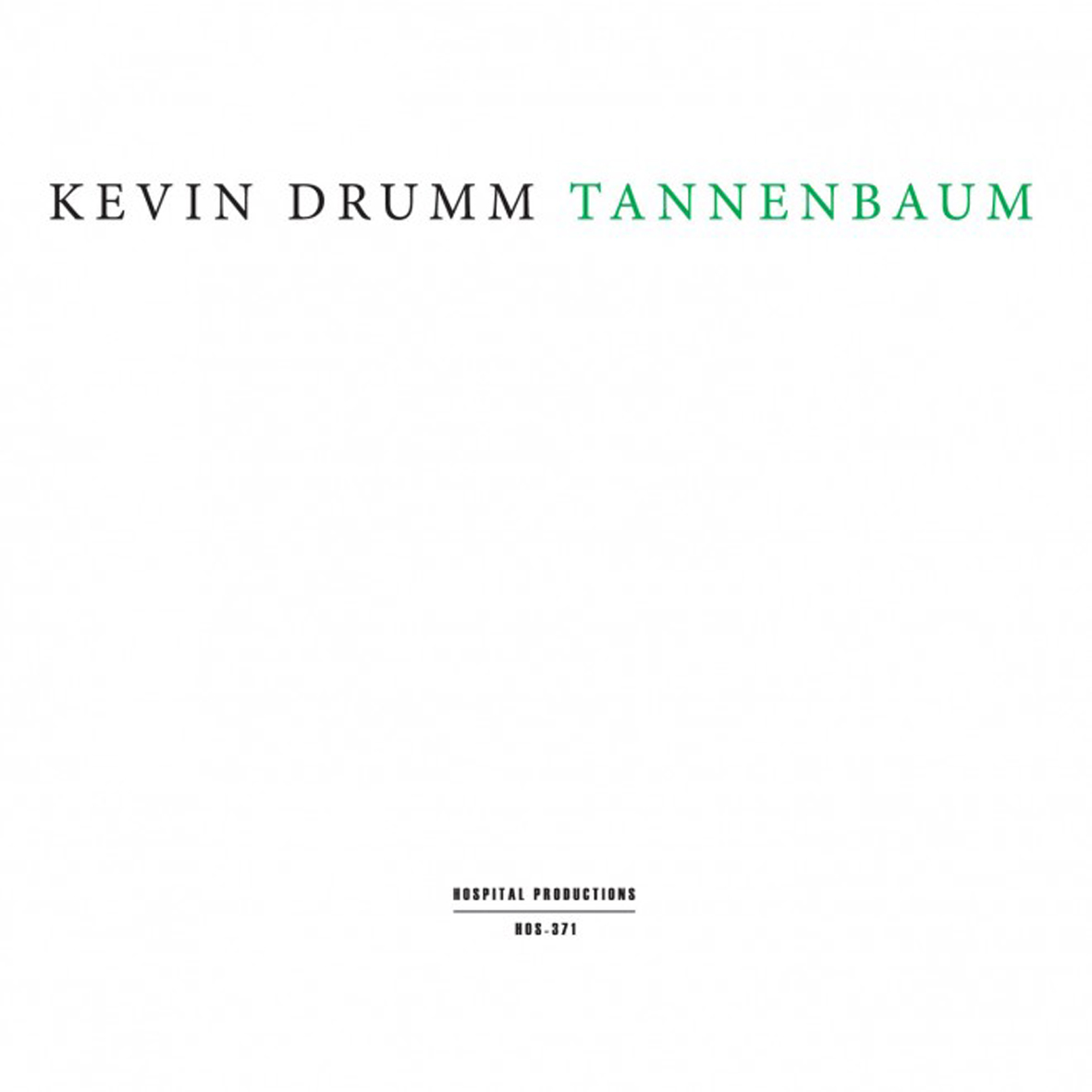 This is an album of such glorious and near-comic excess that it could only have been released by Hospital Productions, as it clocks in at a staggering 2 1/2 hours of brooding dark ambiance.  In fact, it feels like a perverse negative image of the perfectly distilled brutality of last year's Relief, drowsily stretching out endlessly in drone-mode without a hint of violence to be found.  A few of these seven pieces are (of course) quite good for what they are, but this is not an album that showcases Drumm's power, vision, and distinctiveness particularly well at all.
This is an album of such glorious and near-comic excess that it could only have been released by Hospital Productions, as it clocks in at a staggering 2 1/2 hours of brooding dark ambiance.  In fact, it feels like a perverse negative image of the perfectly distilled brutality of last year's Relief, drowsily stretching out endlessly in drone-mode without a hint of violence to be found.  A few of these seven pieces are (of course) quite good for what they are, but this is not an album that showcases Drumm's power, vision, and distinctiveness particularly well at all.
Drumm is not exactly a stranger to ambient drone music, but his first foray into that realm (2008's Imperial Distortion) was quite a polarizing event for his fans (in fact, Kevin seemed quite conflicted about it himself in some interviews).  That effort gradually (and rightfully) came to be regarded as one of the highlights of Drumm's discography, however, as did its similarly excellent follow-up Imperial Horizon.  Tannenbaum is a continuation of that thread in some ways (it is ambient rather than harsh noise, after all), but it is perplexingly divergent as well.
It definitely shares some common ground with some of Imperial Distortion's darker pieces, but the complete album is an altogether more minimal, cold, and alienating affair, often stretching one chord or idea to 10 minutes or more with little variation or development.  "Grace," for example, is little more than a fairly static insectoid buzz.  While that arguably works somehow, the album's opening hour-long drone slog "Night Side" most certainly does not.  Nor do several other pieces, particularly "Taurean," which sounds like Kevin fell asleep face-down on a synthesizer for half an hour.
I am not at all hostile or dismissive towards long-form drone ultra-minimalism, as several people can do it quite beautifully (Eliane Radigue or Machinefabriek, for example).  Unfortunately, most artists are not quite up to that formidable challenge and I am sad to say that Drumm is one of them.  He does not crash-and-burn horribly or anything, but his pieces in that vein feel faceless, overlong, and unsatisfying–there is nothing at all about them that stands out at particularly Drumm-esque.  When I pick up a Kevin Drumm album, I do not want to hear something that a dozen or more other artists could have recorded.  Also, there are a number of confounding compositional issues, such as the fact that the warm thrum of "Gradual Extinction" unfolds for 8 minutes with no real evolution, then seemingly fades out completely before the more vibrant two-minute coda appears.
Fortunately, Kevin fares significantly better with album's darker, heavier moments.  My favorite piece is the 20-minute "Winter Ice."  While it is just as minimal and static as some of the album's more exasperating moments, it is far more compelling due to its gently swaying and blurry dissonance.  The heavier, rumbling "Dimming the Gas Lights" also stands out, as it is certainly the most visceral stretch of Tannenbaum.  It reminds me of Lustmord or some of Thomas Köner's dark ambient work, but it packs a bit more snarl, often sounding like inhuman howls and moans from deep space during the controlled chaos of its crescendo.
On one level, I am pleased that Kevin did not cynically or lazily repeat the same formula that made the two Imperial albums so great, but it is hard to see this album as anything other than a serious misfire or an uneven grab-bag that could have greatly benefited from some added focus and editing.  I honestly do not think Tannenbaum should have been released in this state, particularly given the high standards that Drumm has maintained throughout his career.  There is certainly a good 40-18 minute album buried amidst the stupefying amount of filler, but even that is not so good that it eclipses my utter bewilderment at some of the decisions that Kevin made.  In particular, I cannot stop wondering why "Night Side" needed to last an entire hour, as so infuriatingly little happens (I am certain it could have said just as much in 10 or 15 minutes).  I had such high hopes too.  Though it pains me to say it, Tannenbaum is truly an album for completists and obsessive fans only–Kevin Drumm is capable of far better and more distinctive work than this.
 
 
Read More
- Administrator
- Albums and Singles
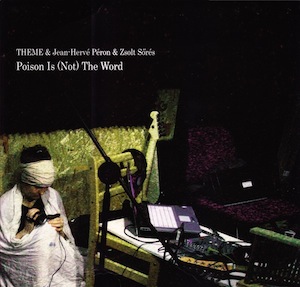 For their fourth album, Theme’s Richard Johnson and Stuart Carter have picked up Faust’s Jean-Hervé Peron and Budapest musician Zsolt Sörés to pad out their already exciting sounds. The three barely restrained improvisations that make up this LP show a group that knows how to cook in the studio. At times tense, at others serene, Theme manage to cover a huge amount of ground with a fairly limited palette of sounds.
For their fourth album, Theme’s Richard Johnson and Stuart Carter have picked up Faust’s Jean-Hervé Peron and Budapest musician Zsolt Sörés to pad out their already exciting sounds. The three barely restrained improvisations that make up this LP show a group that knows how to cook in the studio. At times tense, at others serene, Theme manage to cover a huge amount of ground with a fairly limited palette of sounds.
Side A solely consists of the title track, a long and exciting workout from the group. For this piece, the group consists of Johnson, Carter, Sörés and Zsolt Varga who play with the sort of loose playfulness that brings this "difficult" music in from the cold and into my living room like an odd but thoroughly entertaining guest. Gurgling electronics and almost unpleasant violin come together to make a rich, intoxicating mixture which lies somewhere between the fun side of free improv and the messy side of ambient electronic music. The vocals give the piece a more earnest feel as the phrase "Poison is the word" intensely chanted along with some nihilistic imagery like "Death is always too late." This could put a bit of a downer on the music but the whole thing has a power to it which nearly lifts the stereo off its perch.
Peron makes his appearance on the two pieces on side B, "Baszd meg az apád!" and "Puszta Psycho." The former begins roughly in the same vein as the title track but quickly heads off in a different direction as the dense, noisy improvisations begin to break up and space out. As a saxophone spurts out at its higher registers, Peron’s babbling voice suddenly emerges from the background, sounding otherworldly. "Puszta Psycho" comes right back down to earth with a blanket of gorgeous, shimmering dulcimer (or something similar). Recorded in Budapest, it is easy to imagine ghosts from the city’s Ottoman past inhabiting the instruments. It is a superb piece and I wish it went on for an hour.
Initial copies of the LP come with a bonus CD-R, No Emotions Catered For, which features two pieces from an incoming full length album by Theme. For these two pieces, Olga Drenda and Lukasz Kozak join the core of Johnson and Carter. There is a different vibe to these pieces compared to those on Poison Is (Not) the Word, this is more melodic and, dare I say it, musical than the main album. "Another Context Revealed" sounds like The Angels of Light or a softer version of Swans, Michael Gira’s vocals would fit like a glove over the gently strummed acoustic guitar and vibraphone. The beginning of "Dream Your Dreams" has more of a folky feel to it, thought with a creepy spoken vocal over the sweet fingerpicked guitars. It then dissolves into a cosmic drift that sounds closer to Coil’s Musick to Play in the Dark than anything else on earth before shifting in style yet again into a nightmarish locked groove.
 
Read More
- Administrator
- Albums and Singles
 To celebrate their reissue of 2008's acclaimed, widely beloved, and charmingly titled Dragging A Dead Deer Up a Hill, Kranky has concurrently issued this surprisingly solid companion album of unreleased recordings from the same period.  Nearly all of these pieces adhere to Deer's aesthetic of strummed acoustic guitars amidst a warm, dreamlike haze, but the hooks are not nearly as strong or frequent this time around.  With most artists, that would generally mean "these songs were not good enough," but Grouper has always been far more about atmosphere and mood than "songs."
To celebrate their reissue of 2008's acclaimed, widely beloved, and charmingly titled Dragging A Dead Deer Up a Hill, Kranky has concurrently issued this surprisingly solid companion album of unreleased recordings from the same period.  Nearly all of these pieces adhere to Deer's aesthetic of strummed acoustic guitars amidst a warm, dreamlike haze, but the hooks are not nearly as strong or frequent this time around.  With most artists, that would generally mean "these songs were not good enough," but Grouper has always been far more about atmosphere and mood than "songs."
This album takes its curious title from Liz Harris' teenage memory of an intact sailboat that mysteriously washed up on the beach with all of the owner's possessions still inside, but no trace of the owner.  Such an evocative inspiration is quintessentially Grouper-esque, as Harris occupies a stylistic territory as melancholy, blurry, and enigmatic as a distant memory of the void left by a stranger's death.  While there are certainly a number of structured songs to be found, only the achingly sad (and beautiful) "Living Room" fully emerges from Liz's characteristic fog of reverb and chorusing into clarity.  The remaining songs are content to take shape fleetingly or not at all, resulting in a singer/songwriter album that sounds a lot like an ambient drone album or an unplugged My Bloody Valentine.  Occasionally some understandable words, a strong melody, or an untreated guitar will appear, but the overall aesthetic is decisively warm and womblike (albeit with a lurking, omnipresent sadness).
Notably, there is almost no correlation at all between the success of a piece and how much of the original melody or chord structure is left intact or recognizable.  While the aforementioned "Living Room" is probably the album's high point, many of the other highlights occur during the pieces that have been totally liquified into a blissful haze, such as "STS" and "Difference (Voices)."  Both pieces are little more than layers of floating, indecipherable vocal cooing and a buried hint of a guitar, but they pulse and shimmer in a hypnotically sensuous way.  Wisely, Harris balances her those abstract and narcotic moments with a bit of textural and dynamic variation, periodically employing driving acoustic guitars ("Cloud in Places"), quavering feedback ("6"), and plinking, decayed-sounding piano ("Vanishing Point").
In the past, I have felt that Grouper's signature blend of tape hiss, reverb, song fragments, and sadness was a bit too monochromatic for my taste, but I have since come around quite a bit due to a shift in my own perspective.  Taken out of their greater contest, many Grouper songs can seem like little more than wordless sketches propped up by loads of reverb, but a broader look at Harris' recent discography evinces a deliberate drive to discard conventional song structures (and sometimes even words) in favor of something much more dreamlike and impressionistic.  Still, Liz can craft a wonderful hook when she wants to, which is why It is easy to see why most of these songs were cast-offs from Dragging a Deer: the songs on that album offer much more in the way of immediate gratification.  Despite that, The Man Who Died in His Boat is a remarkably cohesive and satisfying effort in its own right–it feels far more like a more abstract, varied, and experimental sister album than anything resembling a collection of outtakes.
 
Read More
- Administrator
- Albums and Singles
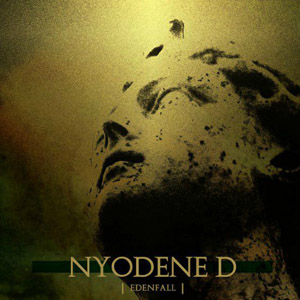 American Power Electronics is a divisive sub-sub genre for me. My tastes tend to lean towards the more industrial/punk tinged, politically ambiguous European type (Genocide Organ, Grey Wolves, etc), because the US projects are too often hung up on violent misogyny or politically unambiguous shock tactics. Projects like Nyodene D, however, manage to transcend the clichés and put together albums that stand entirely on their own, such as Edenfall.
American Power Electronics is a divisive sub-sub genre for me. My tastes tend to lean towards the more industrial/punk tinged, politically ambiguous European type (Genocide Organ, Grey Wolves, etc), because the US projects are too often hung up on violent misogyny or politically unambiguous shock tactics. Projects like Nyodene D, however, manage to transcend the clichés and put together albums that stand entirely on their own, such as Edenfall.
One of the absolute strengths of this record is, no matter how chaotic and dissonant the songs get, there is always a sense of organization and structure, even if it might not be obvious.The slow lurch on "Edenfall" that mixes overdriven noise and violent crashes comes across immediately as rhythmic, and propels the piece throughout, as additional layers of noise are added in a way that makes sense compositionally.
On "Scars of Anthropology" it might not be immediately obvious, but there is a distinctly melodic undercurrent that drives the work throughout, even amidst the dialog samples and buzzing noises."Anasazi" even goes further and focuses on a looped sample of Native American chanting that, once noise piles on, the result still feels a bit more open and spacious compared to the dense affairs that preceded it.
The other especially strong aspect of this album is the use of vocals and lyrics.The vocals, especially on the title track and "Scars of Anthropology" feature the heavy flanging and commanding bark that Mike Dando has always done so well with Con-Dom, who is one of the best vocalists in the genre as far as I am concerned.The words are not always intelligible, but the mood and emotion is quite clear, and the included lyrics make it clear that Nyodene D avoids the usual genre pitfalls.
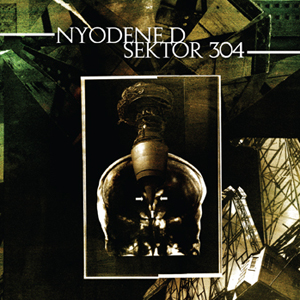
The collaboration EP with Sektor 304 makes for a strong, if not essential compliment to the album.What I mean by that is it does not feel intrinsically tied to Edenfall, even if Sektor 304 utilized songs from the disc as source material.Their reworkings of material into "The Human Fractal" and "The Shaft" come across as less organized, with an added emphasis on percussive bangs and organic found sounds."Furnace," however, feels much more like a traditional song, with structured bits of static and steady metallic percussion, giving it a distinctly old school flair.
Nyodene D's reworking of the Sektor 304 material feels more in-line with the sounds on Edenfall, although the muted percussion of "All Over All" is a bit different in comparison, while the flanged vocals and dive-bombing square waves of "Vulture (For Gil Scott-Heron)" fit right in.Both the collaborative EP and full length album make for dense, aggressive works, with their own distinct beauty.Thankfully devoid of the trite thematic elements and unstructured knob twiddlings that all too often plague this kind of material, Nyodene D stands quite nicely above his often less-impressive peers, both on his own and in his collaboration with Sektor 304.
samples:
 
Read More
- Administrator
- Albums and Singles
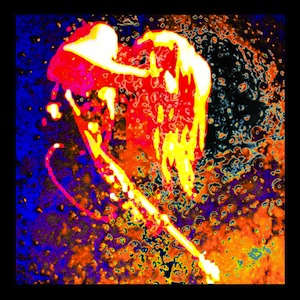 Welsh psychedelic rockers Ectogram return with a limited edition album that sees them try some new approaches in the studio. Eschewing their propensity for unrestricted jamming and long, long pieces of music, they have instead tried to create shorter, poppier works with as little electric guitar as possible. They succeeded in the song length/format but were less successful on the guitar front. The end result is one of the best albums they have put their name to.
Welsh psychedelic rockers Ectogram return with a limited edition album that sees them try some new approaches in the studio. Eschewing their propensity for unrestricted jamming and long, long pieces of music, they have instead tried to create shorter, poppier works with as little electric guitar as possible. They succeeded in the song length/format but were less successful on the guitar front. The end result is one of the best albums they have put their name to.
 
Turquoise Coal / Pure Pop for Now People
"Out of Storks" kicks off Exo-Celestial in style, a driving E-Bow melody immediately pulls me in as Ann Matthews reels off the sort of surreal lyrics that Colin Newman would have given his eye teeth for during Wire’s glory days. Beginning on such a high, I wondered where Ectogram could go from here and they do nothing to disappoint. "Geometric Overload" not only picks up the baton where "Out of Storks" left off but completely pushes the music into heavenly areas. Delicate acoustic guitar over thundering drums create a fantastic piece of alternative pop that should be on national radio right now (and I bet it would sound terrific on stage).
The energy is sustained through songs like "Diermaier’s Dream" (a nod to Faust’s drummer Zappi, who Ectogram have close contacts with) with its lyrics about "hipsters, shifters and kamikaze swimmers," stunning melodies and a seismic anti-guitar solo near the end. The clarinet on "Tritonathon" takes the group to another place altogether, guitar harmonics and glockenspiel adding a disorientating psychedelic edge to the music. Elsewhere, paranoia sets in on "Isodermia" with Alan Holmes’s noisy stint on a BC8 synthesiser with Ectogram again showing yet another side to their playing.
Released to coincide with the end of the world (i.e. the 21st December 2012), my copy arrived on the morning of the apocalypse. Overall, it was providing a (mainly) cheery background for all things Armageddon-ish but thankfully Earth has survived long enough for me to enjoy this album a few times as it gets better with every listen. Granted, there are times where I wish they would extend the songs out to the sort of lengths that are found on other Ectogram releases but overall this creative shake-up has paid off big time.
samples:
 
Read More
- John Kealy
- Albums and Singles
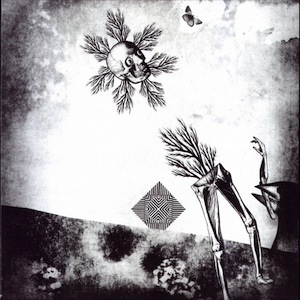 Formerly of Volcano the Bear, Nick Mott has been working on his own music for the last couple of years. This single is a mixed result, too short to give a good idea of where he is going yet it contains glimmers of potential. It looks fantastic with Mott’s distinctive collage-work on the cover but somewhat falls down on the actual music. Luckily the limited edition version succeeds where the regular version fails by adding a substantial amount of music to the work.
Formerly of Volcano the Bear, Nick Mott has been working on his own music for the last couple of years. This single is a mixed result, too short to give a good idea of where he is going yet it contains glimmers of potential. It looks fantastic with Mott’s distinctive collage-work on the cover but somewhat falls down on the actual music. Luckily the limited edition version succeeds where the regular version fails by adding a substantial amount of music to the work.
The main part of Almost Entirely of Nerves and Blood is a single sided 7" featuring the title track. Beginning with abstract rubbing of ridged surfaces over a glassy drone, the piece suddenly pops open with thick electronic feedback. However, as nice as it sounds, it feels like a beginning for something more substantial but isolated on one side of a solitary 7" single, it seems somehow throwaway. This feels strange as by putting so much work into releasing just five minutes of music should point to the importance of the work but "Almost Entirely of Nerves and Blood" never quite gels together for me.
A limited number of singles also come with a bonus CD-R with a 15 minute piece, "Great Swords of Another Age." This is a lot better than single itself as there is enough time for the ideas Mott employs to take root and bear fruit. Sounding like the kind of existential atmospheres that should have accompanied a film like Das Cabinet des Dr. Caligari, this really could have been a full release on its own (maybe with a bonus 7"). Greyed out soundscapes and dread-filled rhythmic passages come together to make an unreal and powerful trip.
 
Read More
- John Kealy
- Sound Bytes
 Formerly of Volcano the Bear, Nick Mott has been working on his own music for the last couple of years. This single is a mixed result, too short to give a good idea of where he is going yet it contains glimmers of potential. It looks fantastic with Mott's distinctive collage-work on the cover but somewhat falls down on the actual music. Luckily the limited edition version succeeds where the regular version fails by adding a substantial amount of music to the work.
Formerly of Volcano the Bear, Nick Mott has been working on his own music for the last couple of years. This single is a mixed result, too short to give a good idea of where he is going yet it contains glimmers of potential. It looks fantastic with Mott's distinctive collage-work on the cover but somewhat falls down on the actual music. Luckily the limited edition version succeeds where the regular version fails by adding a substantial amount of music to the work.

